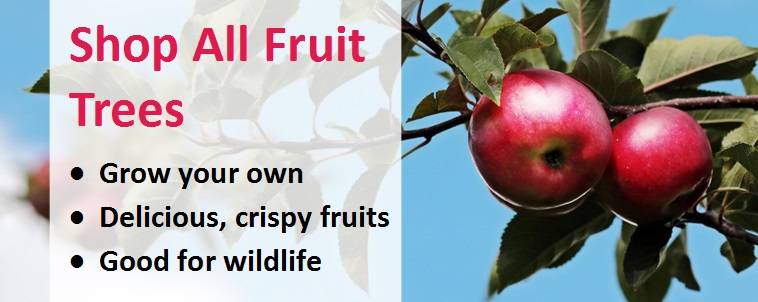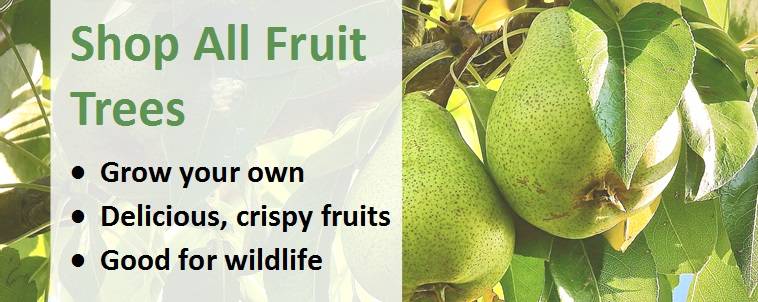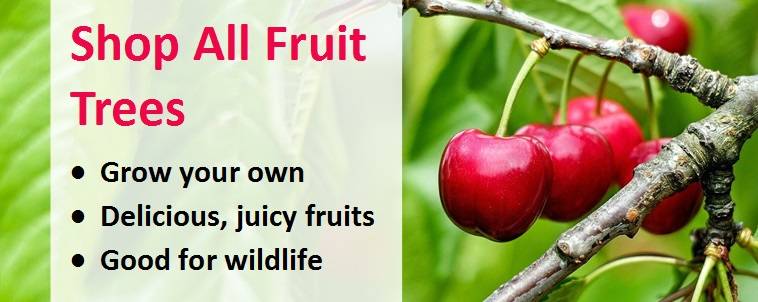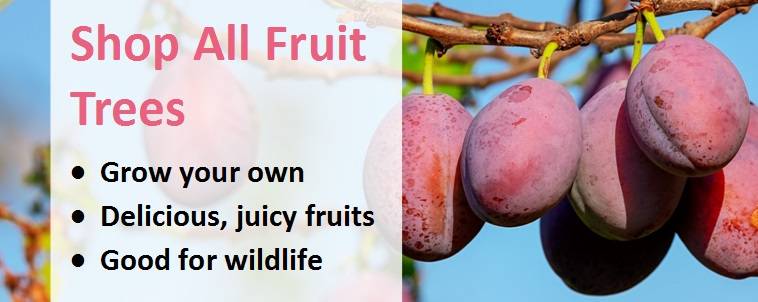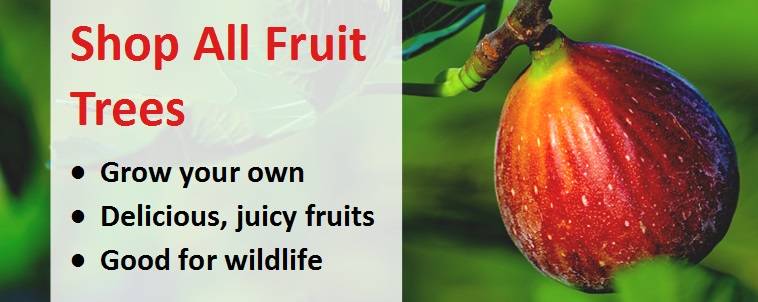Guide to Fruit Trees
Fruit trees include pome fruits (apples and pears), stone fruits (peaches, nectarines, apricots, plums and cherries), as well as nut-bearing fruit trees such as walnuts and almonds. You don't need to have an orchard to enjoy home-grown fruit; in fact, by purchasing a tree on a dwarf root stock or training your trees into space-saving forms such as espaliers, cordons and fans, they can be perfect for smaller gardens too. A lot of people are reluctant to grow their own fruit, thinking that the rewards do not justify the effort. Here at Jackson's Nurseries we're encouraging everyone to start a home-grown revolution, not least because growing your own is incredibly rewarding and the results will be far more flavoursome than anything you can find on the supermarket shelves. We're convinced that once you've bitten into your first home-grown Cox's Orange apple, devoured a handful of fresh Stella cherries straight off the tree, relished the exquisite flavour of your own Moorpark apricot or even polished off the last semi-dried organic fig dunked in dark chocolate as a rustic al fresco dessert, you'll never look back!
Choosing a Fruit Tree
There are a number of considerations when choosing a fruit tree, but the obvious place to start is what type of fruit you'd like to grow. After all, however many other merits a particular type of tree has going for it, you will be wasting your time if you don't like the fruit. The most popular type of fruit trees are apples, but you by no means have to follow convention. The best variety to choose is largely down to personal taste and there is of course nothing stopping you from growing a range of trees (even in smaller gardens, providing you choose the form and rootstock carefully). Flavour, eating qualities and an abundant crop are all important - cherry, damson, fig, hazelnut, nectarine, peach, olive, pear and plum trees all produce good results. If growing a range of fruit trees, give consideration to the cropping season of each to ensure you have a steady supply of fruit throughout the year, rather than a glut at one time and none at other times.
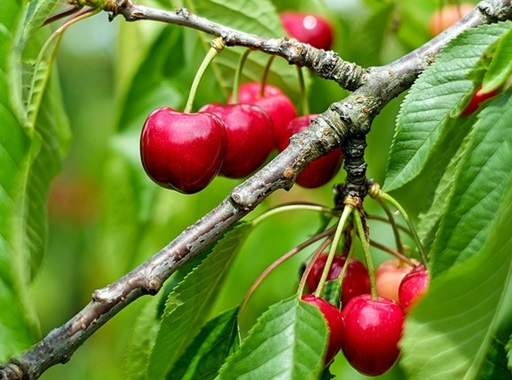
Form
It's worth giving some consideration to the form that you'd like to grow your fruit tree in right at the outset. There are a number of options:
- Growing as a traditional, untrained, branched fruit tree - the easiest option if you have the space available in your garden
- Espalier - a fruit tree or bush that is trained to grow flat against a wall, essentially making it 2D. They have 2 or more layers, typically spaced around 40cm (16 inches) apart, with each pair of branches trained along a wire. Apples and pears take very well to espalier training. Single-tiered espaliers, forming a T-shape, are often called 'stepovers'
- Cordon - a fruit tree that is trained to grow as a single stem, with fruit appearing on each short fruiting spur along its length. They are particularly well adapted to smaller spaces. Growing them at a 45 degree angle against a wall will mean each cordon is longer than if vertical - giving more fruit per tree
- Fan - fruiting branches that radiate from a low central core. Many stone fruits, including peaches, apricots, cherries, plums and figs, take well to fan training
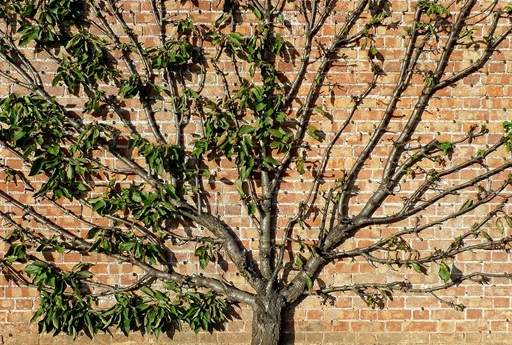
Choosing whether to buy your tree trained or create it yourself is very much a cost-benefit analysis - it's worth bearing in mind that it can easily take 4 years to train a tree. Buying a trained tree means the space is filled immediately and the harvest comes more quickly. If you do prefer to train your tree yourself, the best type of tree to plant is a feathered maiden or a two year old. Maidens are one year old trees - feather maidens being one year old trees with branches and maiden whips being one year old trees with little or no branching.
Rootstock
Fruit trees are propagated on rootstocks through a process called grafting. One plant is selected for its roots and this is called the stock, or rootstock, which will determine the vigour and eventual height/spread of the tree. The other plant is selected for its stems, leaves, flowers and fruits, and is called the scion or coin. Grafting essentially involves attaching the shoot of the scion to the chosen rootstock. This allows you to benefit from the healthy rootstock of one tree, which will grow to the desired height, as well as the tasty fruit of the other. Rootstocks come in various sizes and are the most important factor in determining the vigour and eventual size of the tree. The 4 main types are indicated below:
- M27 - the smallest type of rootstock, which will produce a tree that grows to around 1.5m tall and 1.5m wide. They are suitable for vigorous fruit tree varieties, requiring minimal pruning, but need staking throughout their life. Perfect for container growing, small spaces and step over forms.
- M9 - dwarf bushes growing to around 2.5m x 2.5m. They require little pruning, making them useful as cordons, spindle bushes or dwarf trained forms, but do again require staking throughout their life. Hardy and tolerant of wetter but not dry soils
- M26 - a productive, easy-to-grow, semi-dwarf rootstock producing a tree of around 3m x 3m. Ideal for cordons, bush forms, fans and even dwarf pyramids in smaller gardens.
- MM106 - a larger rootstock producing a more vigorous tree reaching 4.5m x 4.5m. It has a strong root system so only requires staking on exposed sites and makes a good substitute for M26 on wet clay soils, demonstrating greater tolerance to these conditions. Suitable for espaliers, fans and bush forms.
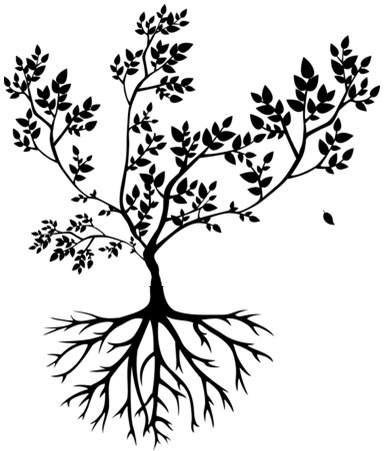
Remembering the different types of root stocks and their associated eventual heights and spreads can be challenging, so all of our fruit tree pages clearly indicate the maximum height and spread that the tree can be expected to reach (some varieties are available on different rootstocks so you can choose the one that's most suitable for your particular situation).
Pollination Groups and Times
To ensure good pollination and therefore a good crop, it is necessary to grow 2 or more different varieties that are either the same pollination group or one pollination ground either side of each other (flower at the same or similar times), so be sure to check and match up the pollination groups for the trees you buy. Alternatively, you may prefer to opt for a self-fertile fruit tree, which will produce a good crop without the need for another tree to pollinate them. It's also worth bearing in mind that the fruit of early ripening trees tends not to keep well, whereas later ripening varieties are suitable for storing over winter.
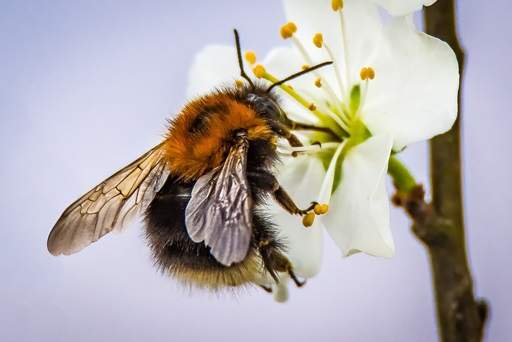
Other Considerations
Other key considerations when choosing a fruit tree are:
- Easy to Grow - you may love the fruit, but if you're not able to get a variety to succeed in your garden, you will not be able to enjoy the crop. All of Jackson's Nurseries fruit trees are chosen at least in part because they are easy to grow, so the task of filtering out those varieties that are more hard work and temperamental has been done for you
- Resistant to pests and diseases - disease resistance is important. If a variety is particularly disease prone and does not crop well, it is not recommended no matter how tasteful the fruit. All of the fruit trees we sell demonstrate at least an acceptable level of pest and disease resistance
- Climate and growing conditions - particularly if your local conditions are unfavourable in some respect. All of our fruit trees are fully hardy, although adverse growing conditions are likely to stunt their growth rate and eventual height and spread somewhat. Consider choosing a root stock that would normally grow to a size larger than that desired to compensate.

Planting Advice
Container grown fruit trees can be planted at any time of year providing there is not a frost and the ground is not waterlogged, although autumn planting is preferable, as they need less watering than ones planted in spring or summer. Bare root trees can be planted from late autumn to the end of winter as this is when the tree is in its dormant stage. If the ground is frozen, or you can't plant for some other reason, 'heel' in your fruit tree in a shallow trench, angling the trunk and covering the roots at the bottom of the trunk with moist soil.
Choose a sunny, sheltered position well away from any frost pockets and avoid poorly drained or shallow soils. We recommend growing your fruit tree(s) along a south-facing wall or fence. The wall will soak up the heat of the sun, allowing for a longer ripening time. When you're ready to plant, give the roots of the tree a good soaking before planting. Be careful to ensure the depth of the planting hole is adequate to accommodate all of the root system - it should be the same depth and one-third wider than the root ball. Once you've finished digging, break up the bottom of the planting hole with a fork and build in plenty of well-rotted organic matter such as manure, leaf mould or well-rotted garden compost. At this stage, recheck the depth of the planting hole using a cane or rod; it is vital to match the depth of planting to the depth at which the tree has been grown on our nursery.
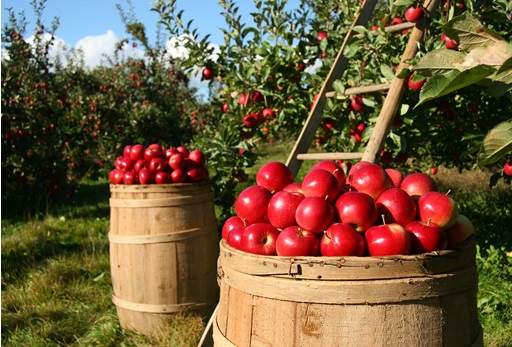
Next, carefully place the root ball of your new fruit tree into the hole, apply a general purpose fertiliser to the soil you've just dug out, then backfill into the planting hole again and firm with your boot. If you are planting a bare root fruit tree, as the topsoil is backfilled, shake the tree up and down to allow the soil to filter around the roots. Once you've finished backfilling, ensure that the tree remains upright and the graft union (the point when the fruit variety is grafted onto the rootstock) is not buried. Drive a sturdy stake into a point on the windward side of the hole that will match up well with the tree once planted. Attach the tree to the stake using a tree tie, remembering to use a buffer to prevent chaffing.
Finally, tidy the planting hole and water thoroughly. Apply a thick mulch of organic matter, taking care not to allow it to accumulate around the crown of the tree. The ground mulch applied at planting time should be repeated annually - this should help to retain moisture and smother weeds so there is no competition in the vital root active areas.
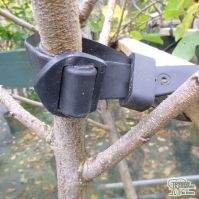
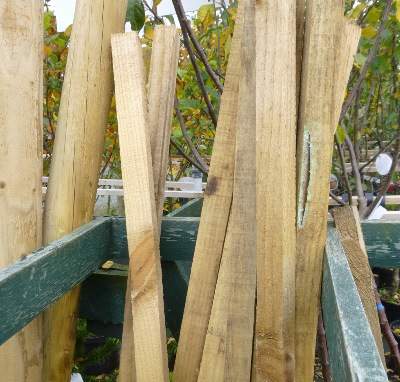
Our Planting Kit with stake, tree tie and Osmocote tablets is perfect to give your new fruit tree the best start
If container growing a very dwarf fruit tree, use a soil-based potting compost (John Innes No 3 is ideal) to half-fill your pot or tub, then place your tree on top. Finish by filling in the pot/tub with more compost to the base of your tree, ensuring you do not cover the crown, and water thoroughly.
Pruning
Annual pruning of fruit trees is necessary to remove congested and diseased shoots, encourage new growth on which new buds will form and increase the productivity of your tree. Trees that are not pruned become less productive and congested with old branches and diseased shoots. Pruning is easy, even for the novice gardener - use a pair of bypass secateurs to create an open goblet shape with a framework of about 5 main branches. Thought is needed in setting out the basic framework of the tree and reducing shoots by about one-third to a bud in an outward pointing direction. Most fruit trees should be pruned in late autumn and winter, supplementing with light pruning in summer if absolutely necessary in smaller gardens. Cordons and other forms of intensive fruit trees should be pruned during the summer months from the third week in July or in areas with heavy rainfall, further north or in wet summers from the second week in August. Summer pruning involves removing the fresh, current seasons growth back to a certain point.
Pests & Diseases
Choosing a fruit tree with a degree of disease resistance is the important first step, particularly if you wish to grow fruit organically or if you live in a part of the country where climate favours certain diseases; all of the varieties we stock are suitable. To further defend your tree from moths and caterpillars, apply a grease band 45cm (18 inches) above soil level to the trunk of your tree and tree stake in late autumn. This will protect your fruit from moths that may otherwise destroy your fruit and leaves. The grease band is basically a glue or sticky paper that prevents windless female moths from reaching the branches of the tree to mate, thereby preventing caterpillars which would eat the leaves and fruit of your precious fruit tree. If you have the time, we also recommend using an oil-based winter wash in December or January to kill off any over-wintering pests.
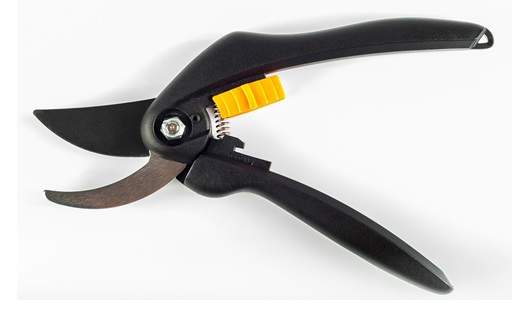
Feeding Fruit Trees
Fruit trees require balanced supplies of nutrients to maintain good results. Whilst not every tree needs fertilising every year and not in the same amounts, if your fruit tree either failed to produce an abundant crop in the previous year or is not demonstrating the expected annual growth rate (bearing in mind your local growing conditions), feeding your fruit tree is recommended. Fruit trees are best fertilised just before bud break at the end of winter / beginning of spring using an organic high nitrogen fertiliser - chicken manure or fish, blood and bone plant food are perfect. Alternatively, use a specialist fruit tree fertiliser; the NPK numbers show the percentage of each nutrient, Nitrogen, Phosphorus and Potassium which it contains.
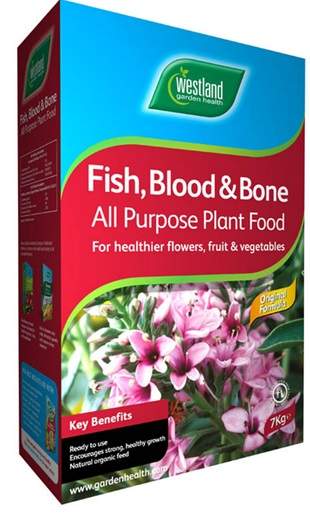
Start fertilising a foot away from the trunk, not right next to it and spread the fertiliser out evenly, all the way out to the drip line (the perimeter of the trees farthest reaching branches). Another effective but trickier method is to drill a series of small holes within the drip line perimeter so the fertiliser can sink down into the soil around the roots more easily. Drill the holes to a depth of 15cm (6 inches) and position them 12-18 inches apart from 30cm (1 foot) away from the trunk, all the way to the drip line. Sprinkle a little bit of the fertiliser into each hole, then cover over with soil.
Start fertilising a foot away from the trunk, not right next to it and spread the fertiliser out evenly, all the way out to the drip line (the perimeter of the trees farthest reaching branches). Another effective but trickier method is to drill a series of small holes within the drip line perimeter so the fertiliser can sink down into the soil around the roots more easily. Drill the holes to a depth of 15cm (6 inches) and position them 12-18 inches apart from 30cm (1 foot) away from the trunk, all the way to the drip line. Sprinkle a little bit of the fertiliser into each hole, then cover over with soil
Storing your Fruit
During the harvesting season, you'll usually find you have a lot more fruit than you can use at once. In these situations its useful to store your fruit to be consumed at a later date, remembering that early ripening fruit trees tend to only store for a few weeks, whilst later ripening varieties will store for several months over the winter. Store your fruit in a cool, dark, frost-free place - a shed in a shady part of the garden or a garage are often the most suitable places. Ideally, place your fruit within a strong wooden box with slats on the base and side walls for good air circulation - stackable boxes can be used to help save space. Ensure your boxes are clean before use to prevent your fruit going mouldy or becoming infected.
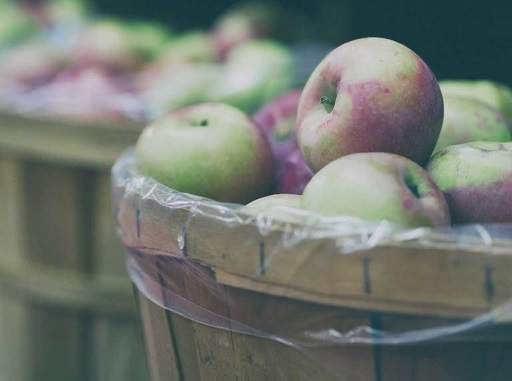
The rewards of growing a fruit tree are well worth it
Place your fruits into the box stalk-down, leaving a small gap between each fruit. Ensuring the fruits do not quite touch each other will mean that if one happens to rot it should not spread to other fruits nearby. Try to avoid placing the boxes right into the corner of your shed or garage where there is not any air movement, instead move them slightly away so you get air movement around them. Some people choose to wrap stored apples - we do not recommend this as it prevents you from easily spotting when they ripen. Check stored fruits regularly so you can see them ripening and determine the best time to eat; doing so will also help you to spot any that start to rot early on so they can be removed and not allowed to spread to the other fruit.
-
Plant Guides
- Guide to Bamboo Plants
- Guide to Climbing Plants
- Guide to Climbing Roses
- Guide to Conifers
- Guide to Floribunda Roses
- Guide to Fruit Bushes
- Guide to Fruit Trees
- Guide to Garden Ferns
- Guide to Garden Shrubs
- Guide to Heather Plants
- Guide to Hedging Plants
- Guide to Herb Plants
- Guide to Herbaceous Perennials
- Guide to Hybrid Tea Roses
- Guide to Japanese Maple Trees
- Guide to Ornamental Grasses
- Guide to Rhododendrons
- Guide to Topiary
Share this page:

